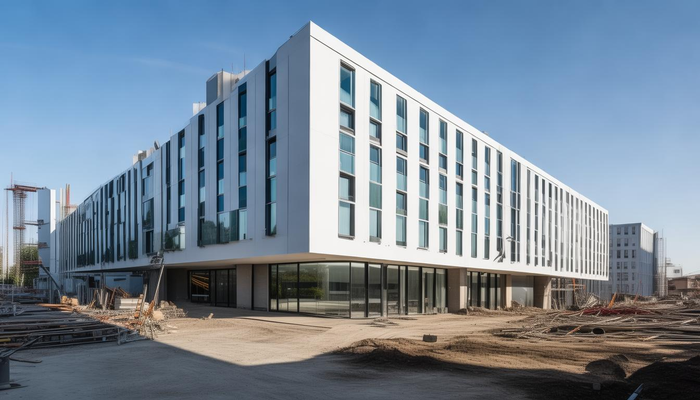Let’s talk about the adaptive building system today, which is really a tall and super practical thing! Ultra-high frequency search terms, this is an adaptive building system, everyone wants to know what's going on!
The so-called adaptive building system means that the building can react and adjust itself according to the external and internal environmental conditions, just like adding clothes when it is cold and taking off clothes when it is hot. It is the result of the integration of architecture and advanced technology
Let’s first look at the benefits of adaptive building systems!
1. Energy saving : It can dynamically adjust lighting and ventilation, greatly reducing energy consumption. For example, some smart windows can automatically block light according to the intensity of sunlight!
2. Usage experience : It can change according to our internal usage needs, the space can be flexibly adjusted, making it more comfortable for people to use.
3. Extend the life of the building : It can reduce the damage caused by some environmental factors to the building, which is equivalent to wearing a layer of protective armor on the house!
Let’s talk about how this system is implemented!
1. Sensor technology : You have to rely on various sensors distributed in the building to detect temperature, humidity, etc., to feel the external environment, like a small investigator!
2. Control system : Receive the sensor signal and then direct each component to act! It can be software أنظمة استجابة المباني الذاتية, or it can be hardware control!
3. Variable components : like blinds and movable walls, they are the actual operational part of the system making changes. Install solar panels on the roof, develop electricity when the weather is good, and collect and save when it is rainy. This is an example
The following are common questions and answers to everyone involved in adaptive building systems!
Q : Compared with traditional construction, does the cost increase a lot?

Answer: The initial construction will cost more. However, energy saving and maintenance can be saved a lot during long-term use, and the overall cost-effectiveness!
Q : Is it troublesome to repair if it is broken?
Answer: It is more complicated, but now many intelligent systems have the ability to self-diagnose! At worst, you can still monitor remotely!
Q : Can technology be compatible with old buildings?
Answer: There is potential for improvement! You should choose appropriate parts to update according to the characteristics of the building, and old buildings will also become smart!
Let’s take a look at a comparison between different types of systems! Choose the appropriate system for different functional preferences:
Lighting adjustment system
The key is to make lighting adjustments based on the light energy intensity! Use smart glass or curtains to adjust indoor light. Suitable for buildings that require strict lighting control, libraries, etc. can be used in large quantities.
Ventilation and regulation system
The air is automatically purified and filtered, and the ventilation openings are automatically opened and closed, and the fan is started. It is commonly used in hospitals and factories.
Finally, I think the adaptive building system is so promising! In the future, this system will become more and more awesome, and the proportion of commonly used will also increase. The future comfortable and smart buildings will rely on it! We must learn more and look forward to it!
發佈留言